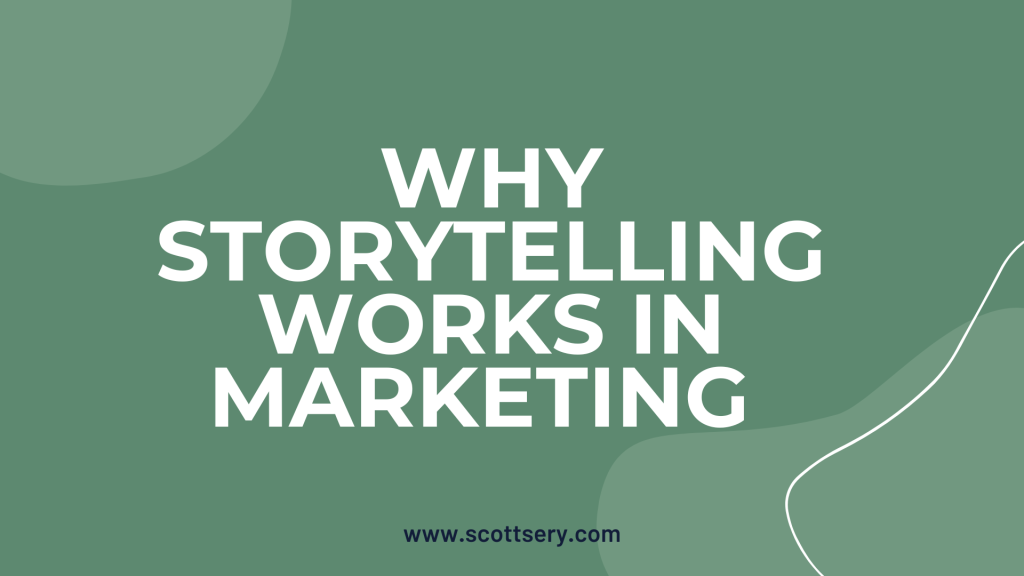
How to Connect by Telling Stories
There was a time when you could describe your job as a storyteller, and people would ooh and ahh. Sounds amazing! They would wonder what you do. Do you sit around the campfire and tell stories… and get paid? Do you randomly show up at people’s homes, and tell them stories? Do you really just make things up and get paid big bucks to do so?
Then along came Donald Miller and created the StoryBrand idea. Suddenly everyone and their mom that was in marketing and branding was flocking to the idea of being a storyteller. And like that, if you have Storyteller listed on your LinkedIn, you’re kind of bofunk and not to be taken seriously.
But the good marketers still tell stories.
All Marketers are Liars
Seth Godin wrote a book a while back called All Marketers are Liars. He quickly realized that his target market is marketers and calling them liars kind of cheesed them off.
So, he rebranded that book as All Marketers are Liars Tell Stories. The basic premise is that the good marketers know how to tell stories that connect with their audience. Of course, most stories, the real-life ones anyway, aren’t really that good. So, a marketer needs to lie a little… or as we call it, embellish. It’s not really a lie, just an exaggeration to make the story a bit more exciting and fun to read, hear, or see.
Why Storytelling is Important
There’s a big premise an anything business related: people buy from those they trust. It’s the whole idea behind network marketing. Instead of a business dumping tons of money into their advertising trying to woo in customers, they pay commissions to salespeople and those folks market to their friends and family. Of course, most of these are crappy MLM’s that just swindle people because MLM’s should be illegal due to their very scandalous nature. But that’s for another blog.
So, if you’re not network marketing, how do you build trust? How does any salesperson or marketer establish the trust they need with their prospects so they can convert them into a paying client?
They tell stories. They talk about their own lives, how the product or service changed their life. They tell stories about previous clients; they build the relationship by talking about how this stuff works in real life.
There are, a few ways that you shouldn’t go about this though.
How to Tell Stories the Right Way
First rule in storytelling as a part of your marketing: it has to be believable. You can embellish and exaggerate (seriously dude, that fish was this big!), but it has to be reasonable (that trout was no 43 pounds). You can keep things believable, but still a little unbelievable at times too. I know of a few people who were in car wrecks that should have killed them, but somehow, they survived. They weave those stories into their narrative to build that trust. Shoot, I have one of my own. Read about it on the six ways to turn a good story into a great story.
The second rule in storytelling as a part of your marketing: make it relevant. It’s so very easy to weave stories and testimonials into just about anything. But somehow, salespeople continue to fudge this one up. Settle in, it’s story time.
Shortly after getting married, my wife and I looked at our living room furniture. Mismatched, hand-me-downs, and thrift store finds we said to each other, “Each other, it’s time we start living like adults, let’s find a living room set!” So, we went off in search of a couch and a loveseat that matched, was comfortable, and fit our relatively small living room.
Finally, we found one. A nice plush chocolate brown micro-fiber thing. You sit on it and sink right in, it was comfy. Now here’s where the irrelevant sales guy comes in. Often people who sell furniture are paid a small commission on the sale, but they make the big bucks on the upsells – warranties and financing. We needed neither on a $1,500 couch and loveseat.
So, one last ditch effort to upsell us, he tells us this story. He relays how a husband and wife recently bought a white couch. They had it delivered, and then the next day they call him up and say there’s a purple stain on their couch. He says it wasn’t from my delivery drivers; that’s for sure! They sheepishly admit that their son spilled blueberry juice on it. The cleaning would have been covered by the warranty, but they passed and had to pay hundreds to have it cleaned.
My wife and I had no kids at the time. We were buying a chocolate brown couch. And who the actual heck drinks blueberry juice?
This guy needed to get a better story to try to sell the overpriced and ridiculous warranty.
You Need a Writer, Scott Sery is a Writer
Weaving stories into your marketing is essential to build that trust. It also takes some finesse, some good storytelling skills, and the time to really create the story and make sure it’s relevant to the situation.
That’s where a professional writer comes in. Whether you’re telling the story in your book, your blog, or your email, AI isn’t going to do it properly (read how to use AI the write way). You need some human touch.
Let’s talk about what you have in mind and see how you can do better in your marketing by weaving storytelling into it. My calendar is below, it’s easy to book a thirty-minute free session with me.
